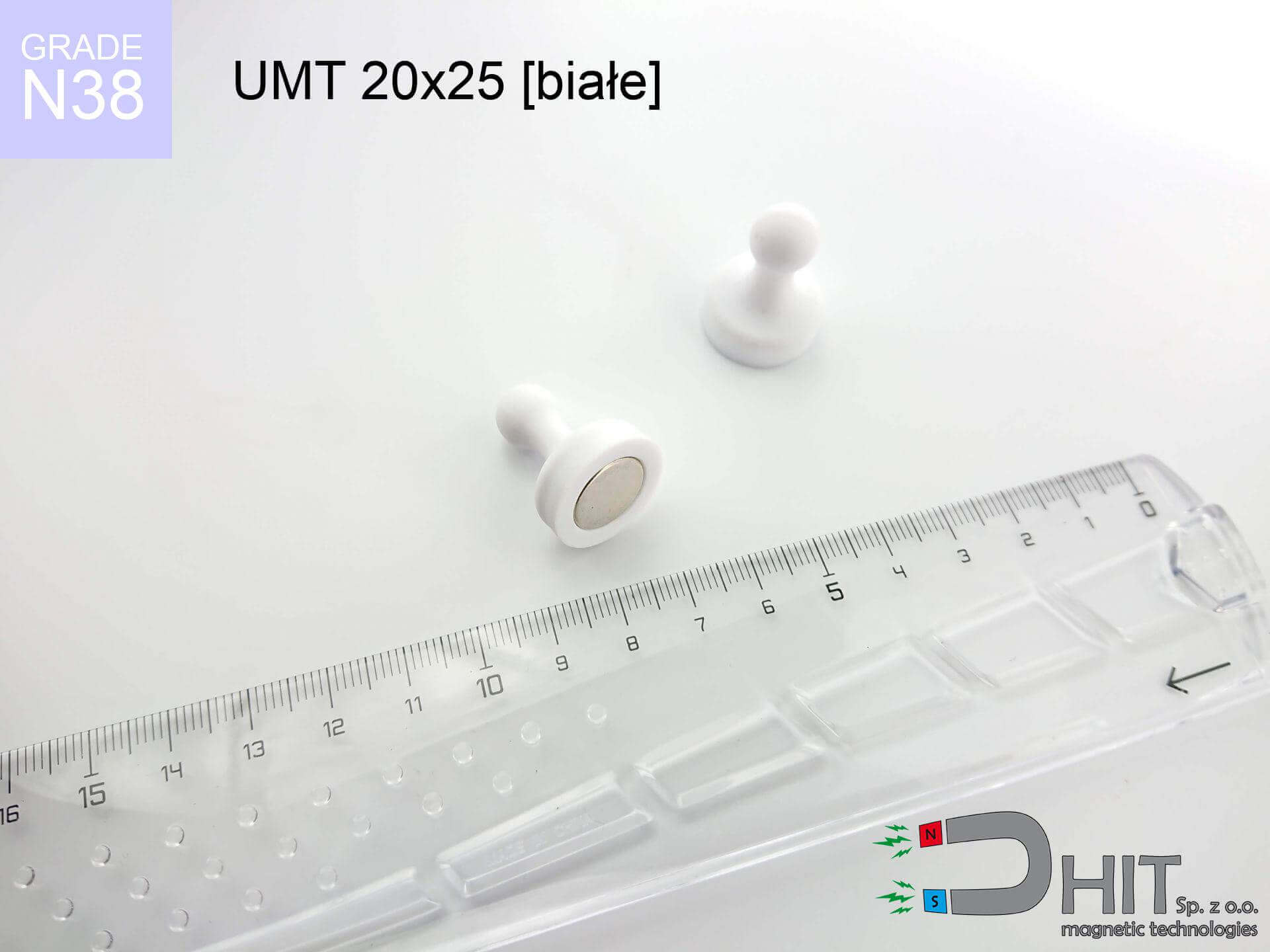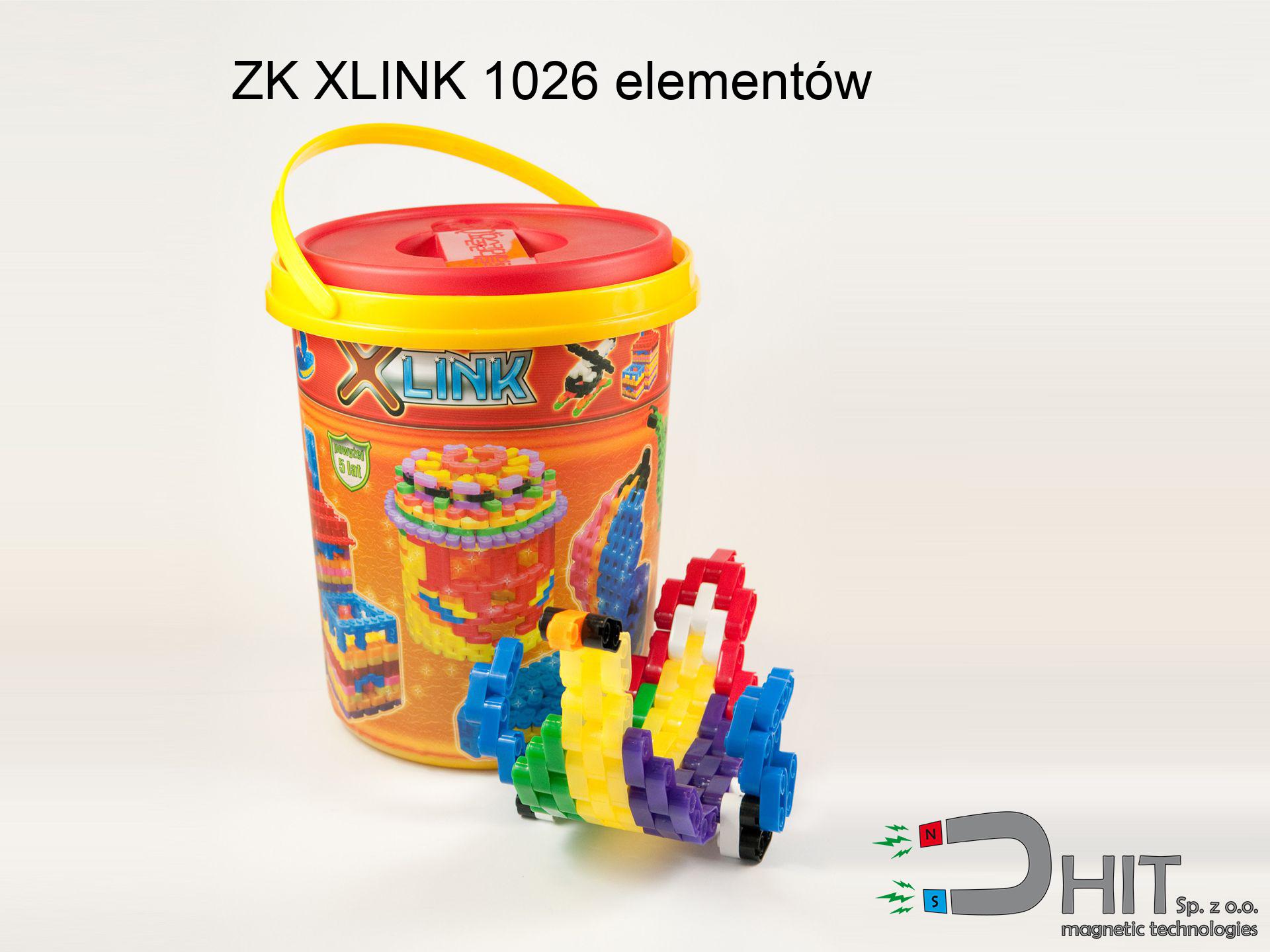UMT 20x25 white / N38 - board holder
board holder
Catalog no 230262
GTIN/EAN: 5906301814252
Diameter Ø
20 mm [±1 mm]
Height
25 mm [±1 mm]
Weight
7 g
Coating
[NiCuNi] Nickel
3.49 ZŁ with VAT / pcs + price for transport
2.84 ZŁ net + 23% VAT / pcs
bulk discounts:
Need more?
Call us now
+48 22 499 98 98
if you prefer let us know by means of
inquiry form
the contact section.
Strength along with form of a neodymium magnet can be verified on our
online calculation tool.
Order by 14:00 and we’ll ship today!
Detailed specification - UMT 20x25 white / N38 - board holder
Specification / characteristics - UMT 20x25 white / N38 - board holder
| properties | values |
|---|---|
| Cat. no. | 230262 |
| GTIN/EAN | 5906301814252 |
| Production/Distribution | Dhit sp. z o.o. |
| Country of origin | Poland / China / Germany |
| Customs code | 85059029 |
| Diameter Ø | 20 mm [±1 mm] |
| Height | 25 mm [±1 mm] |
| Weight | 7 g |
| Coating | [NiCuNi] Nickel |
| Manufacturing Tolerance | ±1 mm |
Magnetic properties of material N38
| properties | values | units |
|---|---|---|
| remenance Br [min. - max.] ? | 12.2-12.6 | kGs |
| remenance Br [min. - max.] ? | 1220-1260 | mT |
| coercivity bHc ? | 10.8-11.5 | kOe |
| coercivity bHc ? | 860-915 | kA/m |
| actual internal force iHc | ≥ 12 | kOe |
| actual internal force iHc | ≥ 955 | kA/m |
| energy density [min. - max.] ? | 36-38 | BH max MGOe |
| energy density [min. - max.] ? | 287-303 | BH max KJ/m |
| max. temperature ? | ≤ 80 | °C |
Physical properties of sintered neodymium magnets Nd2Fe14B at 20°C
| properties | values | units |
|---|---|---|
| Vickers hardness | ≥550 | Hv |
| Density | ≥7.4 | g/cm3 |
| Curie Temperature TC | 312 - 380 | °C |
| Curie Temperature TF | 593 - 716 | °F |
| Specific resistance | 150 | μΩ⋅cm |
| Bending strength | 250 | MPa |
| Compressive strength | 1000~1100 | MPa |
| Thermal expansion parallel (∥) to orientation (M) | (3-4) x 10-6 | °C-1 |
| Thermal expansion perpendicular (⊥) to orientation (M) | -(1-3) x 10-6 | °C-1 |
| Young's modulus | 1.7 x 104 | kg/mm² |
Chemical composition
| iron (Fe) | 64% – 68% |
| neodymium (Nd) | 29% – 32% |
| boron (B) | 1.1% – 1.2% |
| dysprosium (Dy) | 0.5% – 2.0% |
| coating (Ni-Cu-Ni) | < 0.05% |
Ecology and recycling (GPSR)
| recyclability (EoL) | 100% |
| recycled raw materials | ~10% (pre-cons) |
| carbon footprint | low / zredukowany |
| waste code (EWC) | 16 02 16 |
Check out more offers
Advantages as well as disadvantages of Nd2Fe14B magnets.
Strengths
- They have stable power, and over around 10 years their performance decreases symbolically – ~1% (in testing),
- They have excellent resistance to magnetic field loss when exposed to external magnetic sources,
- In other words, due to the metallic surface of gold, the element is aesthetically pleasing,
- They are known for high magnetic induction at the operating surface, making them more effective,
- Through (adequate) combination of ingredients, they can achieve high thermal resistance, allowing for action at temperatures reaching 230°C and above...
- Possibility of exact forming as well as optimizing to individual conditions,
- Huge importance in electronics industry – they serve a role in hard drives, electromotive mechanisms, precision medical tools, as well as technologically advanced constructions.
- Compactness – despite small sizes they offer powerful magnetic field, making them ideal for precision applications
Cons
- To avoid cracks under impact, we suggest using special steel holders. Such a solution protects the magnet and simultaneously improves its durability.
- We warn that neodymium magnets can reduce their strength at high temperatures. To prevent this, we suggest our specialized [AH] magnets, which work effectively even at 230°C.
- They oxidize in a humid environment - during use outdoors we suggest using waterproof magnets e.g. in rubber, plastic
- Due to limitations in producing nuts and complex forms in magnets, we propose using a housing - magnetic holder.
- Health risk related to microscopic parts of magnets are risky, when accidentally swallowed, which is particularly important in the aspect of protecting the youngest. Additionally, tiny parts of these magnets can disrupt the diagnostic process medical when they are in the body.
- With mass production the cost of neodymium magnets can be a barrier,
Lifting parameters
Magnetic strength at its maximum – what contributes to it?
- using a plate made of high-permeability steel, functioning as a ideal flux conductor
- possessing a thickness of minimum 10 mm to avoid saturation
- with an ground contact surface
- under conditions of no distance (surface-to-surface)
- during detachment in a direction perpendicular to the plane
- at ambient temperature approx. 20 degrees Celsius
Impact of factors on magnetic holding capacity in practice
- Gap between surfaces – every millimeter of distance (caused e.g. by veneer or unevenness) drastically reduces the pulling force, often by half at just 0.5 mm.
- Force direction – catalog parameter refers to pulling vertically. When slipping, the magnet holds significantly lower power (often approx. 20-30% of maximum force).
- Substrate thickness – for full efficiency, the steel must be adequately massive. Paper-thin metal limits the attraction force (the magnet "punches through" it).
- Material type – the best choice is high-permeability steel. Cast iron may have worse magnetic properties.
- Surface condition – smooth surfaces ensure maximum contact, which improves force. Uneven metal weaken the grip.
- Temperature – temperature increase causes a temporary drop of force. It is worth remembering the thermal limit for a given model.
Holding force was tested on a smooth steel plate of 20 mm thickness, when the force acted perpendicularly, whereas under shearing force the load capacity is reduced by as much as fivefold. Moreover, even a minimal clearance between the magnet and the plate decreases the lifting capacity.
Warnings
Fire risk
Fire hazard: Rare earth powder is highly flammable. Do not process magnets without safety gear as this risks ignition.
Compass and GPS
Note: rare earth magnets generate a field that disrupts sensitive sensors. Keep a safe distance from your phone, tablet, and navigation systems.
ICD Warning
For implant holders: Strong magnetic fields disrupt medical devices. Maintain minimum 30 cm distance or ask another person to handle the magnets.
Conscious usage
Before starting, read the rules. Uncontrolled attraction can break the magnet or injure your hand. Think ahead.
Allergy Warning
Nickel alert: The Ni-Cu-Ni coating contains nickel. If an allergic reaction occurs, immediately stop handling magnets and use protective gear.
Swallowing risk
Adult use only. Tiny parts pose a choking risk, causing severe trauma. Keep out of reach of kids and pets.
Power loss in heat
Regular neodymium magnets (N-type) lose magnetization when the temperature goes above 80°C. This process is irreversible.
Material brittleness
Watch out for shards. Magnets can fracture upon violent connection, ejecting shards into the air. Wear goggles.
Hand protection
Watch your fingers. Two powerful magnets will snap together immediately with a force of several hundred kilograms, crushing anything in their path. Exercise extreme caution!
Cards and drives
Equipment safety: Strong magnets can damage data carriers and sensitive devices (heart implants, medical aids, timepieces).



![SM 32x250 [2xM8] / N52 - magnetic separator SM 32x250 [2xM8] / N52 - magnetic separator](https://cdn3.dhit.pl/graphics/products/sm-32x250-2xm8-guf.jpg)




